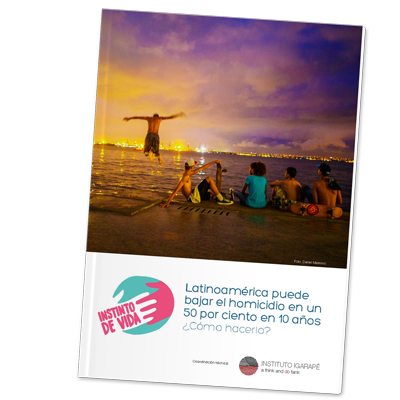
Out of every four people murdered in the world, one is Brazilian, Colombian, or Venezuelan. Latin America, with only 8% of the world’s population, accounts for the largest proportion of homicides in the world: 38% of the planet’s murders occur in the region. The problem is even more concentrated in seven countries: Brazil, Colombia, El Salvador, Honduras, Guatemala, Mexico, and Venezuela. About 34% of the world’s homicides occur in these places.
Tired of watching their countries occupy the top positions in these melancholy statistics, various regional organizations created the Latin American alliance, Instinct for Life.
The Latin American alliance, Instinct for Life, was created through the union of dozens of non-governmental organizations in the region. The proposal is to reduce lethal violence by half in 10 years. This requires pressure and a commitment to innovative, evidence-based public policies.
Around the world, and specifically in Latin America, sustainable reductions of up to 10% and 15% annually have already been reached.
The campaign, Instinct for Life, is a call to action for authorities and citizens to reduce homicides in these seven Latin American countries. In all, 32 organizations have joined the initiative, which includes the support of Open Society Foundations, and organizations such as the Inter-American Development Bank (IDB), CAF – Development Bank of Latin America, and the Organization of American States (OAS).
In Brazil, at least 50 million Brazilians 16 years or older have an acquaintance, friend, or relative who was the victim of a homicide or armed robbery, according to the Instinct for Life study, commissioned by the campaign and produced by Datafolha/Brazilian Forum on Public Security. Over one-third (35%) of those interviewed said they’d lost someone close due to lethal violence.
Policy Guide
At the Organization of American States (OAS) General Assembly in March, Instinct for Life released the guide, “Latin America can reduce homicide by 50 percent in 10 years” The publication identifies a set of actions that have already shown positive effects in lethal violence reduction, selected from data reviews on what works and what doesn’t.

The document shows that the adoption of strategies should start with an intensive analysis of local characteristics and necessities, as well as a cost benefit analysis, of the foreseen and unexpected consequences of its application.
Among the alternatives identified for the reduction of lethal violence are: focused deterrence, which has proven effective in preventing collective violence caused by organized crime; “criminal hotspot” intervention, which allows for the State’s capacities to be dedicated to neighborhoods and streets with the highest concentration of homicides; the reduction of impunity by strengthening the Justice system; firearms and munitions regulations; strategies to reduce the impact of drug trafficking; cognitive behavioral and intervention therapy in early childhood which addresses interpersonal and domestic violence.
Vivos Em Nós Web Portal
The initial activation of the Instinct for Life campaign is the web portal, Vivos em Nós (https://vivosemnos.org), whose objective is to keep the memories of homicide victims alive in order to mobilize society in relation to homicide reduction. Relatives and friends can create exclusive pages with images, messages, and information about the cases. Tributes are used to generate content to pressure authorities to adopt public policies that reduce violence.
The fear of being murdered in Latin America
Citizen perceptions in six of Latin America’s most homicide-affected countries.

This survey was commissioned by the Instinct for Life campaign and conducted by the Latin American Public Opinion Project (LAPOP) of Vanderbilt University, between October 2016 and March 2017.


